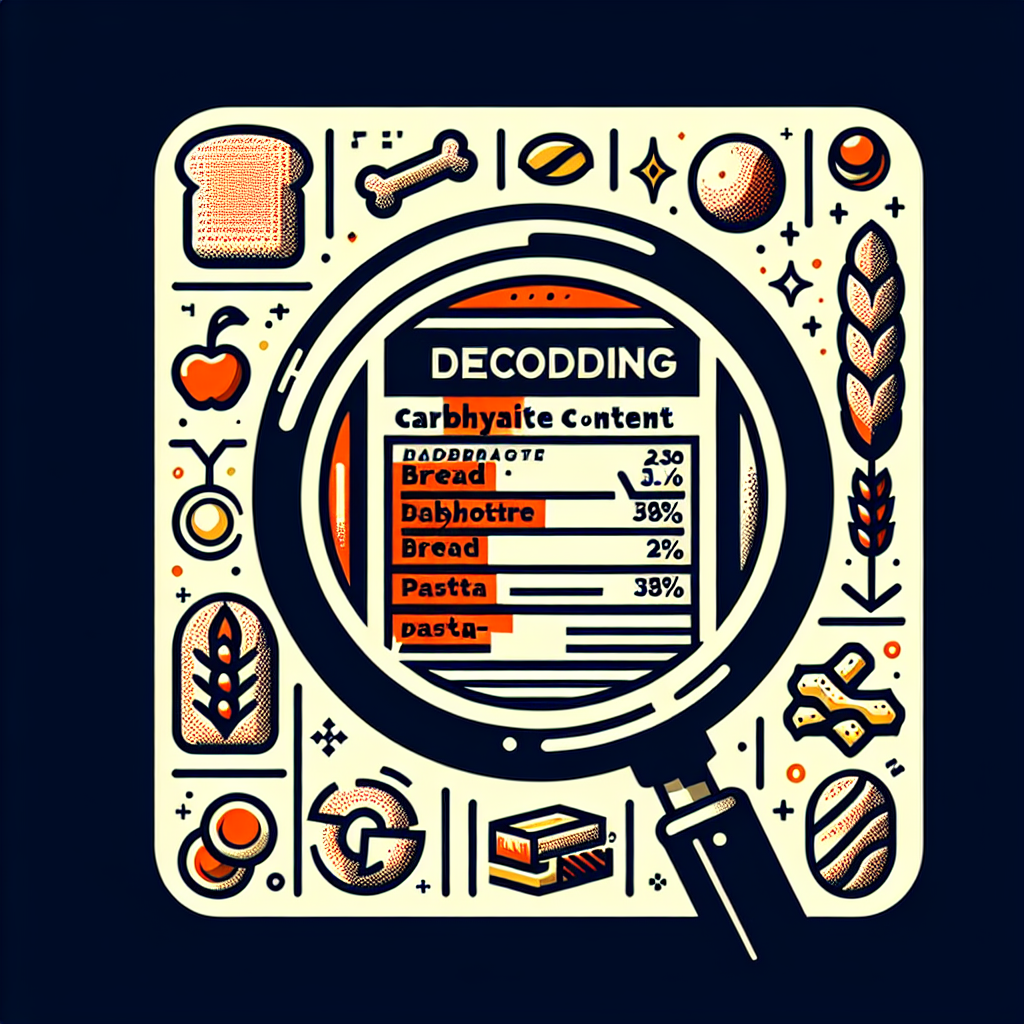Understanding Nutrition Labels: Decoding Carbohydrate Content for Better Choices
When it comes to maintaining a balanced diet, understanding nutrition labels is critical, especially for those monitoring carbohydrate intake. Carbohydrates are a major source of energy, but not all carbs are created equal. With various types of carbohydrates present in food products, decoding nutrition labels can help consumers make informed decisions about their dietary choices.
What Are Carbohydrates?
Carbohydrates are one of the three primary macronutrients, alongside proteins and fats. They are categorized into three main types: sugars, starches, and dietary fiber.
-
Sugars: These are simple carbohydrates that can be found naturally in foods like fruits, vegetables, and dairy. They can also be added to processed foods as sweeteners. Common examples include glucose, fructose, sucrose, and lactose.
-
Starches: These are complex carbohydrates made up of long chains of glucose molecules. They are found in foods like grains, legumes, and tubers.
-
Dietary Fiber: This type of carbohydrate is not digested by the body. Instead, it plays a crucial role in digestive health and can be found in fruits, vegetables, whole grains, and legumes.
Key Components of Nutrition Labels
When looking at a nutrition label, pay close attention to several key components that reveal carbohydrate content:
1. Serving Size
Each nutrition label indicates a specific serving size, which is a critical figure in determining actual carbohydrate intake. Always start by checking the serving size to avoid miscalculating the net carbs consumed.
2. Total Carbohydrates
Located directly under the serving size, this number represents the total carbohydrate amount in the serving. It includes all carbohydrates: sugars, starches, and fiber. Understanding this figure allows you to assess how the food fits into your overall carbohydrate goals for the day.
3. Dietary Fiber
Fiber is subtracted from the total carbohydrates when considering net carbs since it does not raise blood sugar levels. Some labels will highlight this figure separately, allowing consumers to see how much fiber they’re getting.
4. Sugars
Sugar content on a nutrition label typically includes both naturally occurring sugars and added sugars. Recognizing added sugars is essential for those aiming to reduce overall sugar intake.
5. Added Sugars
This figure breaks out the sugars that manufacturers add to foods during processing. Keeping an eye on this number helps identify foods that may be higher in empty calories.
Calculating Net Carbs
For many individuals, particularly those following low-carb diets like Keto, the concept of net carbs is key. Net carbs are calculated by subtracting dietary fiber and certain sugar alcohols from the total carbohydrates:
Net Carbs = Total Carbohydrates – Dietary Fiber – Sugar Alcohols
This formula provides a more accurate representation of the carbohydrates that impact blood sugar levels.
How to Interpret Carbohydrate Values in Different Foods
1. Packaged Foods
In packaged foods, label clarity can differ; always check both the total carbohydrate and sugar sections. Foods with whole ingredients and high fiber content usually offer a better carbohydrate profile. For example, a granola bar may have 30 grams of total carbs, 5 grams of fiber, and 15 grams of sugar, meaning it has 25 grams of net carbs.
2. Fresh Produce
Fresh fruits and vegetables do not carry nutrition labels, but resources can help you understand their carbohydrate content. For instance, leafy greens and non-starchy vegetables are lower in carbs compared to fruits. A medium apple contains around 25 grams of carbohydrates, while a cup of spinach only contains 1 gram.
3. Whole Grains vs. Refined Grains
Distinguishing between whole and refined grains is crucial. Whole grains retain the bran and germ, offering more fiber and nutrients, while refined grains lack these components. A slice of whole grain bread typically features around 15 grams of carbs, while white bread may offer similar carbs with substantially less fiber.
Tips for Decoding Nutrition Labels Effectively
-
Focus on Ingredients: Look beyond the nutrition label and consider the ingredient list. Whole foods, like oats or quinoa, often present better carbohydrate options compared to processed foods with long ingredient lists filled with additives.
-
Utilize Reliable Resources: Numerous online databases and apps can help track carbohydrate intake and provide carbohydrate content for unstated foods.
-
Beware of Health Claims: Products labeled as low-fat or fat-free often contain higher levels of sugar. It’s essential to look at the carbohydrate content instead of relying solely on marketing claims.
-
Educate Yourself on Serving Sizes: Familiarize yourself with standard serving sizes for various foods to enhance understanding when interpreting labels.
-
Monitor Your Body’s Responses: Everyone’s body reacts differently to carbohydrates, and personal monitoring can help identify how specific foods impact energy levels and blood sugar.
The Importance of Contextualizing Carb Content
While understanding carbohydrate content is vital, it is equally essential to consider the nutrient profile of the entire food product. Carbohydrates work best as part of a well-rounded diet, including adequate protein, healthy fats, and micronutrients. The quality of the carbs you consume contributes to overall health; opting for whole, unprocessed foods will provide more nutritional benefits.
By decoding nutrition labels and understanding carbohydrate content, you can make informed dietary choices that align with your health goals. Knowledge is power when it comes to managing your nutrition effectively.
